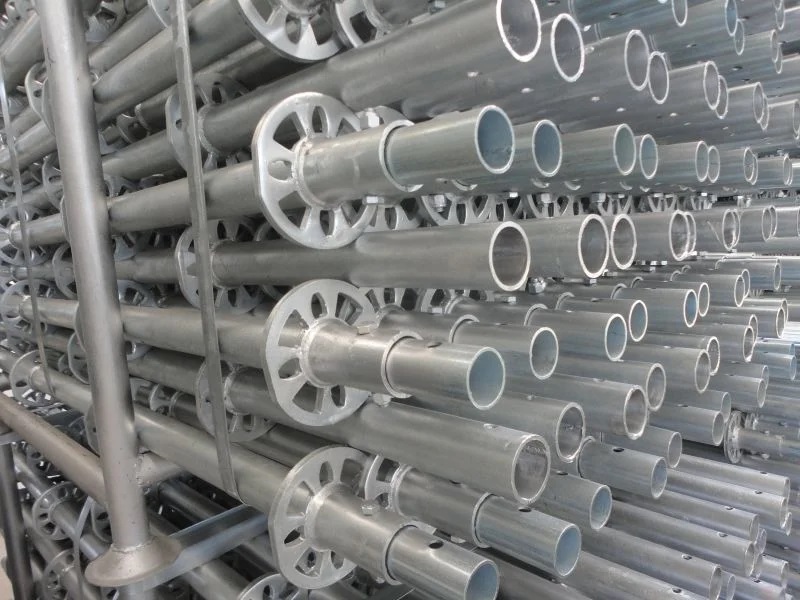The Merits of Hot Dip Galvanizing for Scaffolding
Hot-dip galvanizing is an effective metal anti-corrosion method, mainly used for providing a number of benefits to the steel it protects. It is to immerse the unit steel piece in a bath of molten zinc at about 500°C after rust removal, so that the steel component surface is attached with a zinc layer, thus achieving the purpose of anti-corrosion. Hot-dip galvanizing technology has also been widely used in the field of scaffolding and has great significance for the development of scaffolding products such as ringlock scaffolding, shoring props, etc.

Hot-dip galvanizing process:
There are three fundamental steps in the hot-dip galvanizing process; surface preparation, galvanizing, and inspection.
Advantages of hot-dip galvanizing products:
With the development of industry, hot-dip galvanizing products are widely used in power towers, construction, communication towers, railways, highway protection, street lamp poles, marine components, substation facilities, light industry, and steel structures, etc. The anti-corrosion period of hot-dip galvanizing is long, but it varies in different environments. For example, 13 years in heavy industry, 50 years in the sea, 30 years in the city, and 104 years in the suburbs. In addition, there are several advantages as follows:
1. Durability:
Under the suburban environment, the standard hot-dip galvanizing anti-rust can maintain more than 50 years without repair; in the urban or marine area, the standard hot-dip galvanizing layer can maintain 20 years without repair;
2. Good reliability and high toughness
The galvanized layer is metallurgically combined with the steel surface to become a part of the steel surface, so the durability of the galvanized layer is more reliable;
3. Comprehensive protection
Every part of the products can be coated with zinc, even in depressions, sharp corners, and hidden places;
4. Time and labor-saving
The galvanizing process is faster than other coating methods, and can save the time required for painting on the construction site after installation;
5. Simple and convenient inspection
The hot-dip galvanized layer can be visually inspected and tested with a simple non-destructive coating thickness table;
6. Reliability
The hot-dip galvanized specification is generally in accordance with BSEENISO1461-2009, which specifies the minimum zinc layer thickness, so its anti-rust period and performance are reliable and predictable.
评论
发表评论